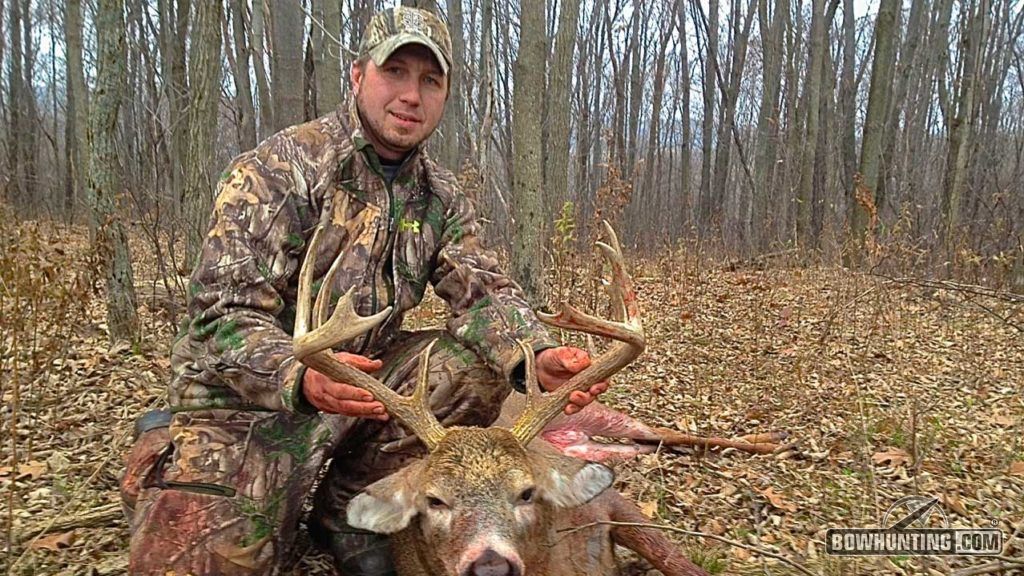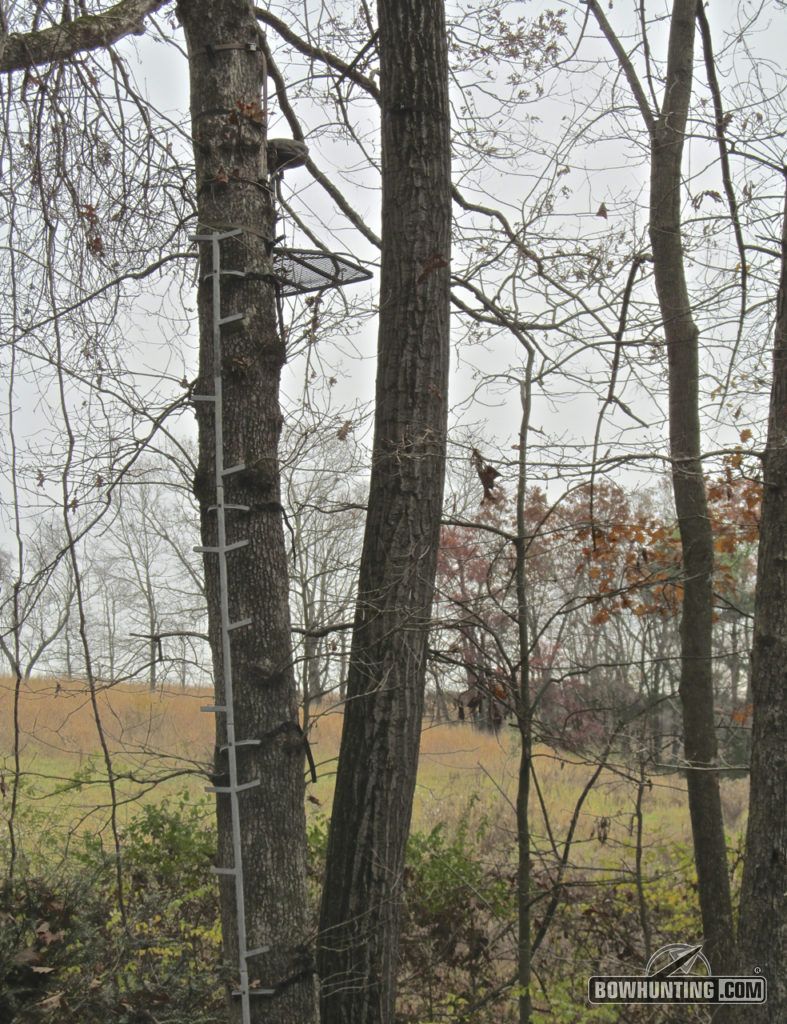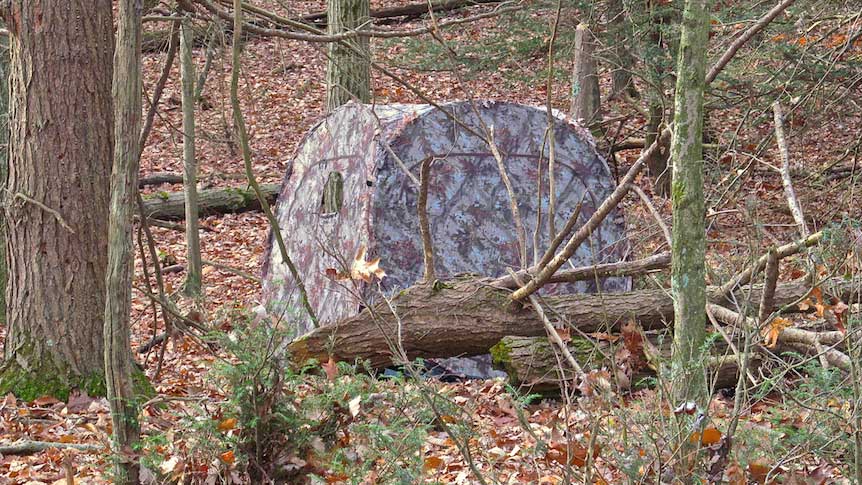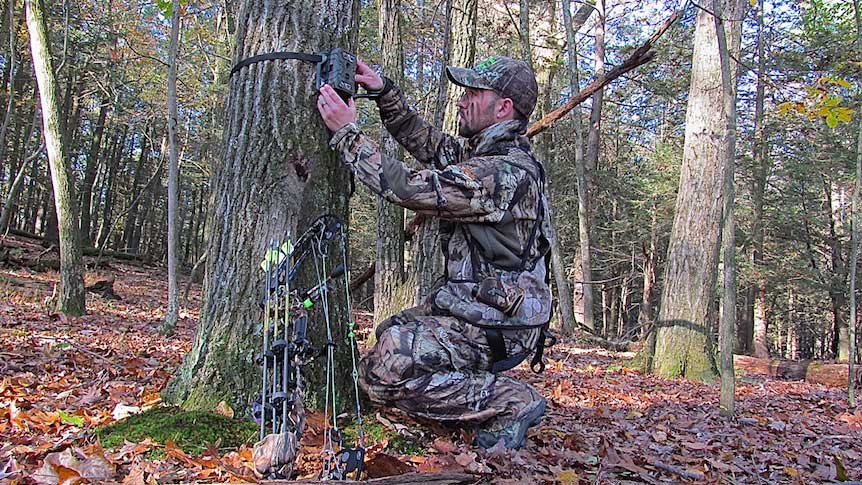When the rut hits, bucks are on the move, and hunters must sometimes follow suit.
Author H.G. Wells once wrote, “Adapt or perish, now as ever, is nature’s inexorable imperative.” His words suggested that those unwilling to adapt to the nature’s changes will almost certainly fail, and this couldn’t be truer for bowhunters.

If you’re willing to adapt and make changes throughout the month of November, you just might punch a tag on a great buck.
The rut is an incredible time to play witness to the wonders of the whitetail woods unfolding. It can be a time of excitement, anticipation and ceaseless action, but the unpredictable nature of the chaos can also at times leave hopeful hunters frustrated and confused.
Areas that seemed promising one day can fizzle out the very next. A morning sit can quickly heat up with immediate chase activity, but then grow colder by the hour, with nary a deer in sight. That’s the way the rut works.
But just because deer sightings diminish, doesn’t mean bucks aren’t still actively seeking mates. It’s possible that the action simply moved elsewhere. Proactive bowhunters can sometimes increase their odds by making changes in their setups, essentially moving themselves to the action, rather than waiting for the action to come to them.
While I won’t encourage hunters to abandon their tree stands every hour they don’t observe the flicker of a tail, I will offer some simple suggestions for staying mobile to stay in the game during the most volatile stages of the rut.
Morning travel hub
If there’s any location worth really sticking it out for a few hours, it’s the early morning travel hub. From daybreak through mid-morning (perhaps 10-11 o’clock or so), focus your efforts on intercepting cruising
Years of trail cam photos and first-hand observations suggest this is the most reliable time to catch a mobile buck on his feet in daylight hours during the seeking phase of the rut.
Bucks tend to cover a lot of ground during the first few hours of daylight, especially if frost or overnight precipitation keeps the ground saturated with scent. They want to visit easy-to-access locations with noses to the ground as quickly and efficiently as possible before moving on.
A stand strategically placed by a secluded field corner or fencerow can be a killer ambush site that doubles as an observation point in the event any moves are necessary. Bucks crossing, say a distant CRP field, out of range can be targeted the following morning using a brushed-in ground blind or a stand hung by a noted entrance/exit trail.
Sets along timber ridges or thick oak flats can also serve dual purposes as morning stakeouts and lookouts. The key is that they can and should be adjusted when warranted.
Last season, a good friend of mine watched a handful of younger bucks pass by him on a trail outside of bow range. After contemplating a change for more than an hour, he finally climbed down and moved closer to the deer’s preferred route.
Twenty minutes later, a gnarly Pennsylvania stud sauntered down the very same trail. He harvested that buck- the best of his career- and was extremely thankful he followed through on his decision to switch things up.
Mid-day shift change
When action slows around mid-day, a good place to sneak into is a thick creek bottom sanctuary. Be sure the conditions are right with a favorable wind and keep your pre-established arrival and departure strategy as inconspicuous as possible.
Locate a shallow creek fork splitting around a small island or merging to form a narrow bottleneck of high ground, and you’ve discovered an ideal courting area for bucks to take a receptive doe for secluded privacy.
These areas are often untamed and fairly thick with vegetation, and since they already serve as natural pinch points, they can be the ideal spot to hang a stand on the predominantly downwind fringes for easy access.
More than once, I have slipped into one such stand during mid-day to witness aggressive chasing activity near the water when other locations on the property seemed to have settled down.
It is important that you get in and out as quietly as possible, so a pre-existing hang-on stand is preferred. Keep it on the outskirts to reduce the risk of getting busted, which is highly likely if you place the stand too far into the core of the area.
Instead, keep your distance, put out some scent, do a little light calling and hope you can prompt an amped-up buck to head your way. This strategy worked for me last year when a large framed 8-point stormed in to investigate, immediately bringing my bow to full draw.
Evening plot watch
Smart hunters know that when the rut hits, they need to shift their focus to prime doe areas, since that’s exactly where bucks will be heading. That means one of the best setups for an evening sit is a stand or ground blind directly overlooking or leading to a low-elevation food source.
Not only are low-lying food plots a huge draw for hungry does to replenish their calorie supply after being dogged all day, but they also provide a relatively open area for displays of social dominance.
As antlerless deer come to feed, mature bucks will often observe from staging areas along adjoining hillsides. When subdominant bucks push out into the fields and begin bumping does around, mature bucks will often commit to reinforce the social order.
Be sure to have options on both sides of the field covering the heaviest doe trails, as bucks will often use them this time of year. Check the wind, and select the stand that will carry your scent away from the field.
There are too many eyes and noses to bust you, so you’ll likely need to sit until dark and have a friend pick you up. Hopefully by then, however, you’ll already have a big buck on the ground.

Blinds allow for quick and easy setup for staying mobile for rutty bucks.
Mobile Strategies
The key to a successful mobile rut strategy is to invest in several tree stands to hang in various locations on your hunting property well in advance of when you think you’ll use them. Inexpensive hang-on stands are light, easy to hang and cause little commotion when paired with some sturdy climbing sticks already pre-set and ready for you when you need them.
Likewise, be sure to give deer plenty of time to get used to any ground blinds you may erect and brush them in with natural vegetation for improved realism. A quality climbing tree stand provides on-the-spot mobility that’s perfect for public land hunters, but takes a little more time and is louder when making a move.
Use in-season trail cams to assess and monitor the most active locations on the property and if anything changes, don’t be afraid to go to the deer. Windy and wet days are the best conditions to travel undetected, but always stay alert. You just might find yourself in the midst of a spot and stalk ground mission.

In-season trail camera use allows you to keep tabs on changes and transitions as the rut rolls on.
There’s definitely a time and a place to pull an all day sit, riding it out from a hot stand in the middle of the action. But if you suddenly find yourself in an apparent dead-zone this fall, it may not hurt to consider going mobile for rutty bucks.
Assess the situation, and make your move when necessary. As H.G. Wells said, we bowhunters must “adapt or perish.”






